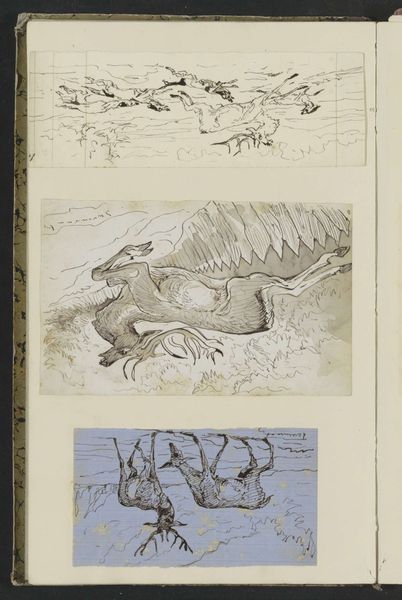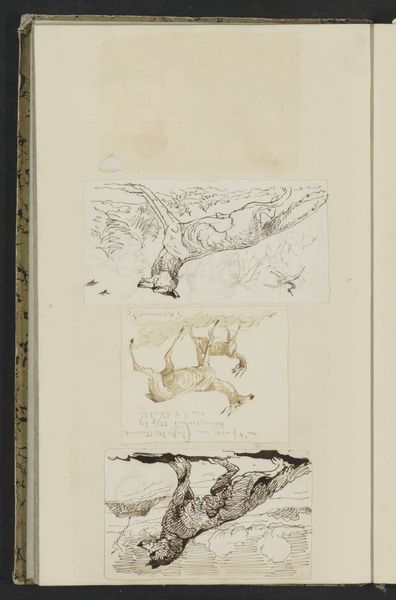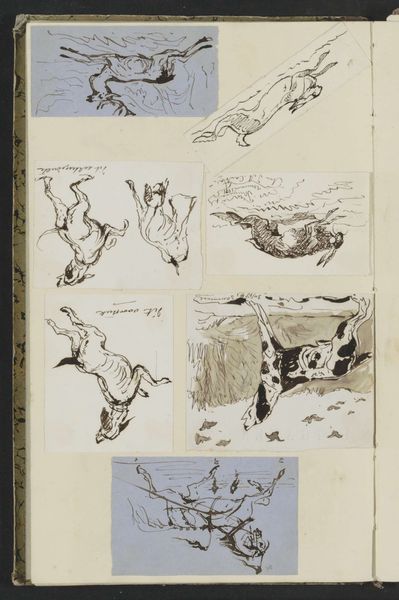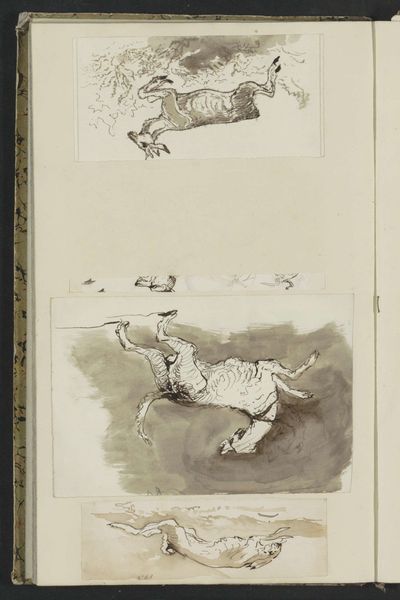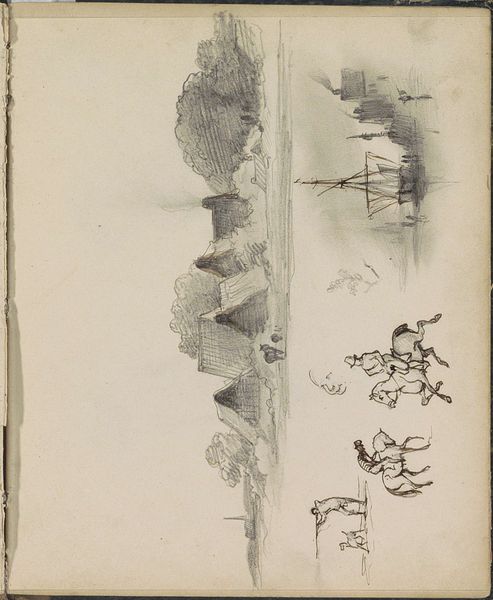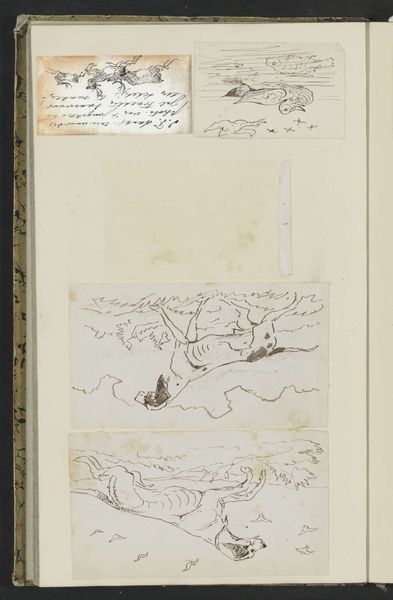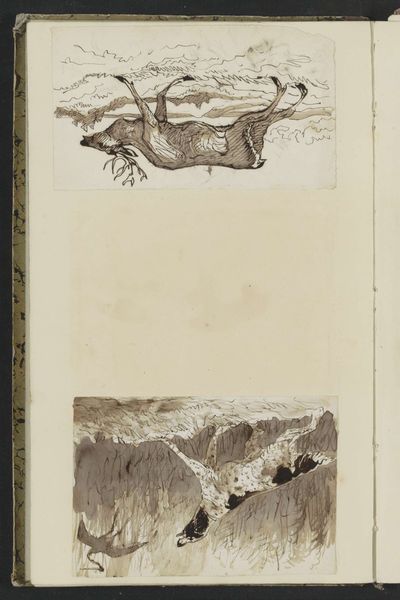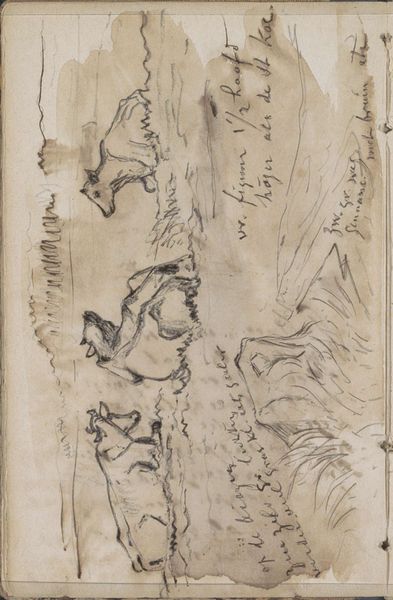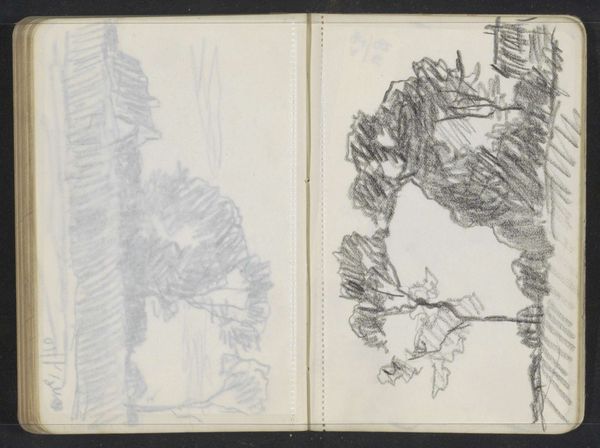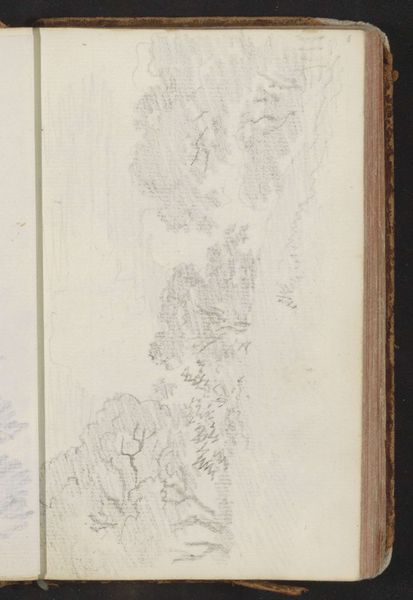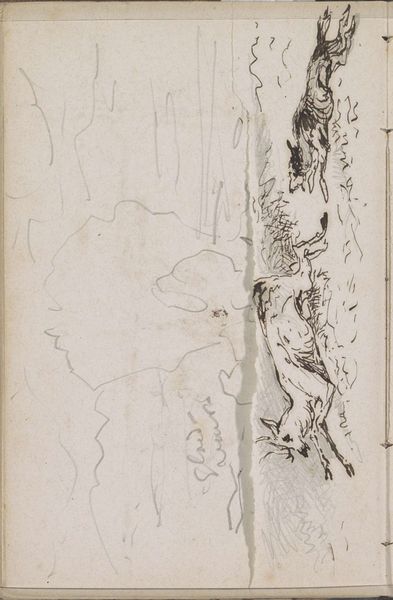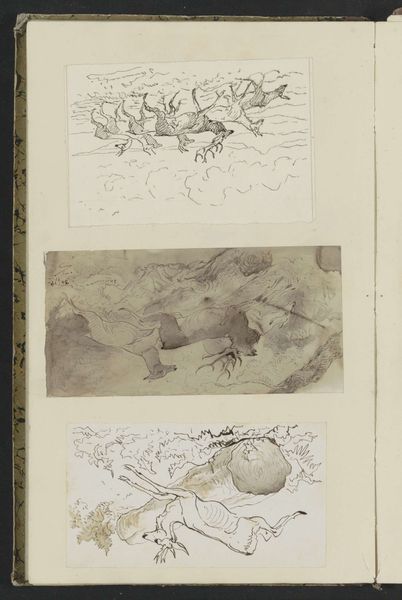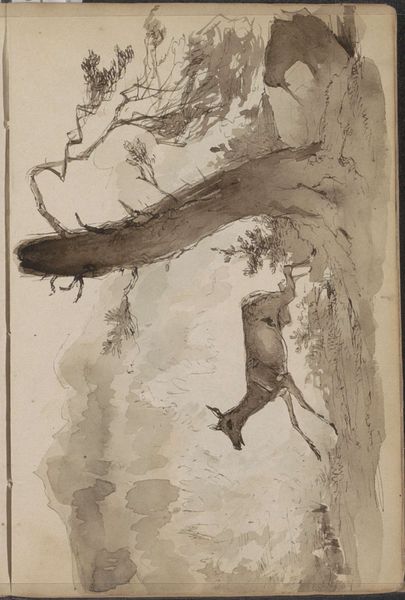
drawing, paper, watercolor, ink
#
drawing
#
animal
#
dog
#
landscape
#
figuration
#
paper
#
watercolor
#
ink
#
watercolour illustration
#
genre-painting
Copyright: Rijks Museum: Open Domain
Curator: Here we have a drawing by Johannes Antonius Canta, "Haas, rennend hert en twee honden," created sometime between 1826 and 1888. It combines ink and watercolor on paper. Editor: It strikes me as rather disjointed, almost dreamlike in its arrangement. The animals are rendered with a stark simplicity. What do you make of the compositions? Curator: The use of line is intriguing, especially in the dogs. The artist uses economical strokes to capture form and motion. Notice, too, how the subtle watercolor washes create a sense of depth despite the limited color palette. Editor: I see a distinct echo of 19th-century hunting culture. The running deer and the dogs are positioned within the historical context of aristocratic leisure, of power dynamics acted out through pursuit. The landscape almost disappears, doesn't it? Reduced to providing a theater for this enactment. Curator: Perhaps, but observe how the minimal setting draws attention to the figuration. The arrangement calls to mind a semiotic structure, a play of signifiers: predator and prey, the tamed and the wild. Editor: I would push back on the neutrality of that 'play'. Aren’t these categories deeply ingrained with societal valuations? The romanticized hunter versus the vulnerable deer—a narrative laden with cultural significance around class and the natural order. Curator: While your interpretation is noted, analyzing the raw artistic structure is still valid. The rhythm of the chase, the implied lines connecting the animals...these compositional elements exist independent of their historical readings. Editor: I would argue such abstraction is a fallacy. The piece exists precisely *because* of these social factors; to disregard them is to lose sight of the driving force behind its creation. The economic and social conditions determined what kind of scenes were considered worthy subjects in the first place. Curator: Ultimately, our engagement reveals how multifaceted interpretation can be. Different theoretical frameworks can coexist. Editor: Agreed. And recognizing these interwoven readings hopefully enriches the artwork's continuing resonance.
Comments
No comments
Be the first to comment and join the conversation on the ultimate creative platform.
